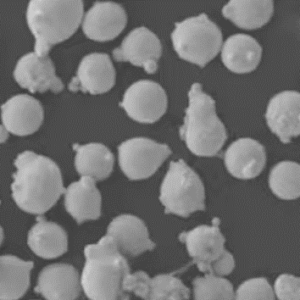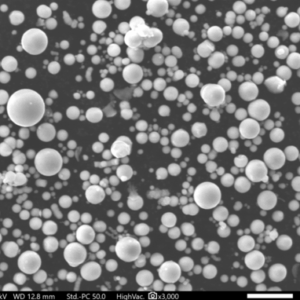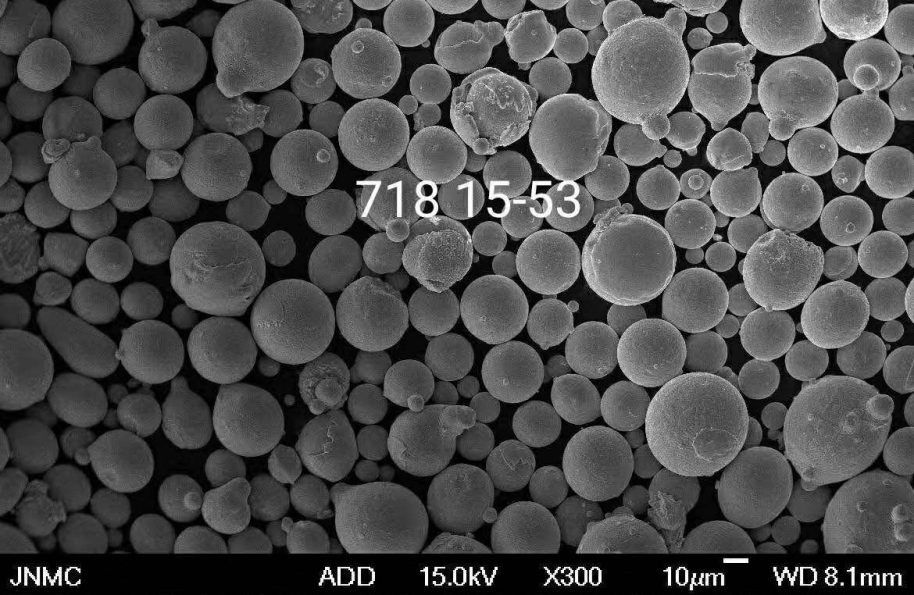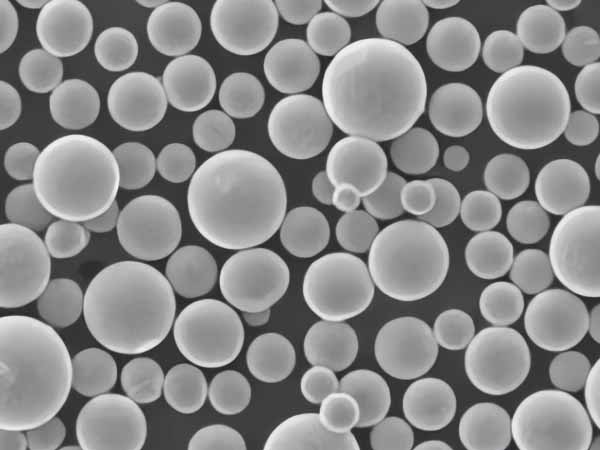실리콘 카바이드(SiC) 분말은 연마재부터 고성능 세라믹에 이르기까지 다양한 산업 분야에 사용되는 매우 다재다능한 소재입니다. 뛰어난 경도, 열 전도성 및 화학적 안정성으로 잘 알려져 있어 엔지니어링, 제조 및 기술 분야에서 가장 많이 찾는 소재 중 하나입니다. 이 상세 가이드에서는 다음과 같은 내용을 자세히 살펴봅니다. SiC 분말를 통해 구성, 특성, 응용 분야 등에 대해 자세히 설명하며 이해하기 쉽지만 기술적으로 풍부한 정보를 제공하는 데 중점을 둡니다.
SiC 파우더 개요
자세한 내용을 살펴보기 전에 탄화규소 분말에 대해 간략히 살펴보겠습니다. SiC는 실리콘과 탄소로 만든 화합물로, 가장 단단한 재료 중 하나입니다. 분말 형태로 연마재와 절삭 공구를 만드는 것부터 세라믹, 반도체 및 자동차 애플리케이션의 원료를 제공하는 것까지 다양한 방식으로 활용될 수 있습니다. 독특한 특성 덕분에 내구성, 내열성, 인성이 요구되는 용도에 이상적입니다.
| 속성 | 가치 |
|---|---|
| 화학 공식 | SiC |
| 경도 | 모스 척도 9.5 |
| 열 전도성 | 120W/mK |
| 융점 | 2,730°C(대기압 하) |
| 밀도 | 3.21g/cm³ |
| 전기 전도성 | 반도체 특성 |
| 산화 저항 | 최대 1,600°C |

SiC 분말의 구성
실리콘 카바이드 분말은 전기로에서 고온으로 실리카 모래와 탄소를 결합하는 Acheson 공정을 비롯한 다양한 방법을 통해 생산됩니다. 이 공정을 통해 각각 고유한 물리적, 화학적 특성을 가진 다양한 등급의 SiC 분말이 생산됩니다.
합성 방법, 순도 수준, 사용 목적에 따라 다양한 유형의 SiC 분말이 있습니다. 일부 분말에는 유리 탄소, 이산화규소 또는 철과 같은 약간의 불순물이 포함될 수 있습니다. SiC 분말의 기본 구성을 분석해 보겠습니다:
| SiC 분말의 종류 | 구성 |
|---|---|
| 블랙 실리콘 카바이드 | 97% SiC, 3% 불순물(대부분 철) |
| 녹색 실리콘 카바이드 | 99% SiC, 매우 낮은 불순물 함유량 |
| 나노-SiC 파우더 | 99.5% SiC, 입자 크기 1~100nm |
| 거친 SiC 파우더 | 95-98% SiC, 연마재용 큰 입자 크기 |
| Micro-SiC 파우더 | 전자제품에 사용되는 고순도, 미세 분말 |
SiC 분말의 특성
SiC 파우더의 고유한 특성 덕분에 다양한 산업 분야에서 우수한 소재로 각광받고 있습니다. 경도, 내열성, 열 전도성 덕분에 절삭 공구부터 전자 장치에 이르기까지 다양한 응용 분야에 필수적인 소재입니다.
경도 및 내구성
SiC는 모스 경도 척도에서 다이아몬드 바로 아래에 속할 정도로 매우 단단하여 연마재에 탁월한 소재입니다. 금속, 세라믹은 물론 티타늄이나 텅스텐과 같은 더 단단한 재료도 절단할 수 있습니다.
열 안정성
다른 많은 소재와 달리 SiC 파우더는 매우 높은 온도에서도 강도와 안정성을 유지하므로 열교환기, 용광로 부품, 브레이크 디스크 등 고열 애플리케이션에 이상적입니다. 최대 2,730°C의 온도를 견딜 수 있어 극한 환경에서 널리 사용됩니다.
내화학성
SiC는 대부분의 환경에서 화학적으로 불활성이므로 산, 알칼리 또는 기타 화학 물질과 반응하지 않습니다. 이러한 특성으로 인해 반도체 및 산업용 세라믹 생산과 같이 화학적으로 공격적인 환경에서 사용하기에 적합합니다.
| 특성 | 세부 정보 |
|---|---|
| 경도 | 모스 척도 9.5 |
| 열 전도성 | 120W/mK |
| 산화 저항 | 최대 1,600°C까지 유효 |
| 전기 전도성 | 반도체; 전도성을 높이기 위해 도핑 가능 |
| 내식성 | 대부분의 환경에서 화학적으로 불활성 |
특정 유형 SiC 파우더 모델
다양한 SiC 파우더 모델은 구성, 입자 크기 및 순도에 따라 특정 용도에 맞게 조정됩니다. 다음은 10가지 특정 SiC 파우더 모델과 자세한 설명입니다:
- F230 블랙 실리콘 카바이드
- 설명: 이 모델은 일반적으로 연마 및 연마와 같은 연마 용도에 사용됩니다. 입자 구조가 미세하고 내구성이 뛰어납니다.
- 순도: 97% SiC
- 애플리케이션: 연마재, 절삭 공구.
- GC 그린 실리콘 카바이드
- 설명: 녹색 SiC는 일반적으로 고정밀 세라믹 및 전자 산업에서 반도체 장치에 사용되는 검은색 SiC보다 순도가 높습니다.
- 순도: 99% SiC
- 애플리케이션: 정밀 절단, 전자.
- SiC 나노 파우더
- 설명: 입자 크기가 1~100나노미터인 초미세 SiC 분말로, 나노 복합재 및 코팅에 이상적입니다.
- 순도: 99.5% SiC
- 애플리케이션: 나노 기술, 코팅.
- 80 그릿 실리콘 카바이드
- 설명: 거친 입자의 파우더로 돌이나 단단한 금속을 연마하는 등 거친 연마 작업에 이상적입니다.
- 순도: 95% SiC
- 애플리케이션: 연마, 샌드 블라스팅.
- SiC 초고순도
- 설명: 고성능 세라믹 생산에 사용되는 순도가 매우 높은 SiC 분말입니다.
- 순도: 99.9% SiC
- 애플리케이션: 고성능 세라믹, 전자 제품.
- F360 실리콘 카바이드 파우더
- 설명: 이 미세한 등급의 파우더는 매끄러운 표면 마감이 필요한 래핑 및 연마 작업에 사용됩니다.
- 순도: 98% SiC
- 애플리케이션: 랩핑, 연마.
- 실리콘 카바이드 마이크로 파우더
- 설명: 주로 코팅 및 내마모성 부품에 사용되는 미크론 크기의 입자를 가진 미세 분말입니다.
- 순도: 98% SiC
- 애플리케이션: 코팅, 내마모성.
- 소결용 SiC 분말
- 설명: 세라믹 생산의 소결 공정을 위해 특별히 설계된 분말입니다.
- 순도: 99% SiC
- 애플리케이션: 세라믹 소결, 고성능 부품.
- 내화용 블랙 실리콘 카바이드
- 설명: 내화물 생산에 사용되는 거친 등급의 분말입니다.
- 순도: 95% SiC
- 애플리케이션: 내화물, 가마 가구.
- SiC 1000 메쉬 파우더
- 설명: 초미립자 파우더로 연마 시 매끄러운 마감을 연출하는 데 이상적입니다.
- 순도: 99% SiC
- 애플리케이션: 연마, 고정밀 마감.
SiC 분말의 응용 분야
SiC 파우더의 다재다능함은 경도, 열전도도, 화학적 안정성의 독특한 조합에서 비롯됩니다. 여러 산업 분야에 걸쳐 다양하게 활용되고 있습니다:
| 애플리케이션 | 세부 정보 |
|---|---|
| 연마제 | SiC는 경도가 높아 금속 및 기타 단단한 재료를 연마하고 절단하는 데 이상적입니다. |
| 도자기 | 고순도 SiC 분말을 사용하여 내구성이 뛰어나고 내열성이 강한 세라믹 소재를 생산합니다. |
| 반도체 | SiC는 고전력, 고온의 반도체 장치에 필수적인 소재입니다. |
| 자동차 부품 | SiC는 브레이크 디스크, 클러치 및 마찰과 마모를 줄이기 위한 코팅에 사용됩니다. |
| 내화물 | SiC는 녹는점이 높아 가마 라이닝 및 기타 내화성 제품에 사용하기에 적합합니다. |
| 나노 기술 | SiC 나노 입자는 고급 코팅 및 복합 재료에 사용되어 성능을 향상시킵니다. |
| 열교환기 | SiC는 열전도율이 높아 열교환기 부품에 완벽한 소재입니다. |
| 래핑 및 연마 | 정밀 산업의 래핑 및 연마 애플리케이션에는 미세 SiC 분말이 사용됩니다. |
SiC 파우더의 장점
알루미나나 텅스텐 카바이드와 같은 다른 재료와 비교할 때 SiC 분말은 몇 가지 장점이 있습니다.
- 더 나은 경도: SiC는 다이아몬드 다음으로 산업 응용 분야에서 사용되는 대부분의 재료보다 단단합니다.
- 뛰어난 열 전도성: SiC는 열을 빠르게 발산할 수 있어 고온 환경에 이상적입니다.
- 산화에 대한 내성: SiC는 최대 1,600°C의 산소에서도 안정적으로 유지되므로 시간이 지나도 산화 및 분해에 대한 저항성이 높습니다.
- 비용 효율적: SiC는 다이아몬드보다 저렴하지만 연마 용도로는 비슷한 수준의 경도를 제공합니다.
- 경량: 텅스텐 카바이드와 같은 금속에 비해 SiC는 가볍기 때문에 자동차 및 항공우주 분야에서 중요한 이점이 있습니다.
SiC 파우더의 한계
SiC는 뛰어난 소재이지만 몇 가지 단점이 있습니다:
- 취성: SiC는 금속에 비해 매우 부서지기 쉬우므로 극심한 스트레스를 받으면 파손될 수 있습니다.
- 기계화하기 어려움: SiC는 경도가 높기 때문에 가공이 어렵고 특수한 도구와 기술이 필요합니다.
- 제한된 연성: SiC는 연성이 낮기 때문에 유연성이 필요한 애플리케이션에는 적합하지 않습니다.
| 장점 | 단점 |
|---|---|
| 대부분의 재료보다 단단함 | 부서지기 쉽고 스트레스를 받으면 골절되기 쉽습니다. |
| 높은 열 전도성 | 전문 장비 없이는 가공이 어려운 제품 |
| 산화에 대한 내성 | 제한된 연성 |
| 다이아몬드에 비해 비용 효율적 | |
| 텅스텐 카바이드에 비해 가벼운 무게 |
SiC 분말의 사양
SiC 파우더를 구매할 때 입자 크기, 순도, 표면적 등 다양한 사양을 접하게 됩니다. 아래는 고려해야 할 주요 사양에 대한 분석입니다:
| 사양 | 값 범위 |
|---|---|
| 순도 | 95% ~ 99.9% SiC |
| 입자 크기 | 1nm ~ 10,000미크론 |
| 표면적 | 10 ~ 100 m²/g |
| 파티클 모양 | 불규칙, 각진, 구형 |
| 색상 | 검은색 또는 녹색 |
가격 및 공급업체
SiC 파우더의 가격은 순도, 입자 크기, 공급업체에 따라 다릅니다. 고순도 또는 특수 SiC 파우더는 향상된 특성으로 인해 더 비싼 경향이 있습니다.
| 공급업체 | SiC 파우더 모델 | 가격(kg당) |
|---|---|---|
| 생고뱅 | 녹색 SiC, 99% | $40 – $100 |
| 워싱턴 밀스 | 블랙 SiC, 97% | $20 – $60 |
| Fiven | SiC 나노 파우더, 99.5% | $100 – $500 |
| ESD-SiC | 초고순도 SiC | $200 – $600 |
| 우수한 흑연 | 소결 SiC, 99% | $50 – $150 |

자주 묻는 질문
| 질문 | 답변 |
|---|---|
| SiC 파우더는 어떤 용도로 사용되나요? | SiC 분말은 연마재, 세라믹, 반도체, 자동차 부품, 열교환기 등 다양한 산업 분야에서 사용됩니다. |
| 녹색과 검은색 SiC의 차이점은 무엇인가요? | 녹색 SiC는 더 순수하여 반도체와 같은 고정밀 애플리케이션에 사용되며, 검은색 SiC는 연마재와 같이 덜 까다로운 애플리케이션에 사용됩니다. |
| SiC 파우더는 비쌉니까? | SiC 분말의 가격은 순도와 입자 크기에 따라 달라집니다. 고순도 SiC는 더 비싸고, 저순도 옵션은 더 저렴합니다. |
| SiC 파우더는 어떻게 생산되나요? | SiC 분말은 일반적으로 전기로에서 실리카 모래와 탄소를 가열하는 Acheson 공정을 통해 생산됩니다. |
| 3D 프린팅에 SiC 파우더를 사용할 수 있나요? | 예, SiC 파우더는 고급 3D 프린팅 기술, 특히 세라믹 및 복합 재료 제작에 사용할 수 있습니다. |
결론
SiC 분말 은 현대 산업에서 중요한 역할을 하는 매우 다재다능한 소재입니다. 경도, 화학적 안정성, 열 전도성 덕분에 연마재부터 반도체에 이르기까지 다양한 응용 분야에서 매우 유용하게 사용됩니다. 엔지니어와 제조업체는 다양한 형태, 구성 및 용도를 이해함으로써 각자의 필요에 가장 적합한 SiC 분말 모델을 선택할 수 있습니다. 고온을 견디거나 거친 재료를 절단하거나 세라믹을 개선할 수 있는 제품을 찾고 있다면 SiC 분말은 간과할 수 없는 소재입니다!














